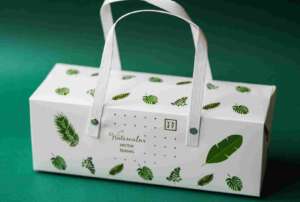Packaging design is a crucial element in the marketing and branding of products. It serves as the first point of contact between the consumer and the product, making a powerful impression that can influence purchasing decisions. Understanding the psychological principles behind packaging design is essential for marketers to create compelling and practical packaging that resonates with the target audience. This comprehensive guide will delve into the various aspects of packaging design and explore the profound impact of psychological principles on consumer behavior.

The Influence of Packaging Design on Consumer Behavior


The influence of packaging design on consumer behavior cannot be overstated. Research has shown that consumers form initial impressions of a product within seconds of exposure, and much of that impression is based on the packaging. Packaging design’s visual and tactile elements can evoke emotions and perceptions that ultimately drive purchasing decisions. Whether the packaging’s shape, color, or material, each piece plays a significant role in capturing consumers’ attention and influencing their perception of the product.
Moreover, packaging design can communicate important information about the product, such as its quality, value, and intended use. Consumers often make assumptions about the product inside based on the packaging design, and these assumptions can heavily influence their purchasing behavior. As such, marketers must carefully consider the psychological impact of packaging design to create packaging that attracts attention and communicates the right message to the target audience.
In today’s competitive market, where numerous products vie for consumer attention, effective packaging design can be the differentiating factor that sets a product apart. By understanding the psychological underpinnings of consumer behavior, marketers can strategically leverage packaging design to create a distinct and memorable brand identity that resonates with consumers.
Understanding the Psychological Principles in Packaging Design


To harness the power of packaging design, marketers must delve into the psychological principles underpinning consumer behavior. One such principle is the concept of visual hierarchy, which dictates how elements within a design are arranged to guide the viewer’s attention. In packaging design, visual hierarchy is crucial in directing the consumer’s focus toward critical information such as the product name, logo, and unique selling propositions.
Another fundamental psychological principle in packaging design is the concept of cognitive fluency, which refers to the ease with which the brain processes information. Packaging designs that are visually clear, simple, and easy to understand are more appealing to consumers as they require less cognitive effort. Marketers can leverage this principle by ensuring their packaging designs are aesthetically pleasing and intuitively understandable, thus creating a positive and effortless consumer experience.
Furthermore, the principle of emotional resonance is integral to effective packaging design. Human emotions play a significant role in consumer decision-making, and packaging designs that evoke specific emotions can profoundly impact purchasing behavior. By understanding the emotional triggers that resonate with their target audience, marketers can create packaging designs that elicit positive emotional responses and forge deeper connections with consumers.
The Role of Color Psychology in Packaging Design


Color psychology is a powerful tool in packaging design that can significantly influence consumer perceptions and behavior. Different colors evoke different emotions and associations, and marketers can strategically employ color psychology to convey specific brand messages and elicit desired consumer responses. For example, warm and vibrant colors such as red and orange can evoke excitement and energy, making them suitable for products targeting a youthful and dynamic audience.
On the other hand, relaxed and calming colors like blue and green can create a sense of trust and reliability, making them well-suited for products that emphasize quality and dependability. Additionally, color contrasts and combinations can draw attention to specific packaging elements, such as call-to-action statements or product features, further enhancing the overall visual impact.
Marketers need to consider cultural and contextual differences when leveraging color psychology in packaging design, as the meanings and associations of colors can vary across different demographics and regions. By carefully selecting and integrating colors into their packaging designs, marketers can create a visual identity that resonates with their target audience and effectively communicates the brand’s values and attributes.
Typography and Branding in Packaging Design


Typography is crucial in conveying brand identity and messaging in packaging design. The choice of typeface, font size, and layout can significantly impact how consumers perceive and engage with the packaging. For instance, a bold and modern typeface may convey a sense of innovation and dynamism, making it suitable for products targeting a tech-savvy and progressive audience.
On the other hand, a classic and elegant typeface can evoke a sense of sophistication and timelessness, aligning with products that emphasize luxury and heritage. Marketers can leverage typography to communicate essential product information and convey the brand’s personality and values, creating a cohesive and impactful brand experience for consumers.
In addition to typography, branding elements such as logos, slogans, and brand imagery play a pivotal role in establishing brand recognition and differentiation. Effective branding in packaging design ensures that the product stands out on the shelf and remains memorable in the minds of consumers. By integrating consistent branding elements across various packaging designs, marketers can reinforce brand loyalty and cultivate a strong brand identity that resonates with consumers.
Creating Emotional Connections through Packaging Design
Effective packaging design goes beyond aesthetics; it can create emotional connections with consumers, fostering a sense of affinity and loyalty towards the brand. By understanding the emotional triggers that resonate with their target audience, marketers can design packaging that elicits specific emotions and forges meaningful connections. For instance, packaging designs that evoke nostalgia or joy can create a positive and memorable consumer experience, leading to heightened brand affinity and repeat purchases.
Moreover, personalization and storytelling through packaging design can further enhance emotional connections with consumers. Marketers can leverage packaging to communicate the brand’s values, origin, and ethos, creating a compelling narrative that resonates with consumers on a deeper level. By integrating elements of storytelling and personalization into their packaging designs, marketers can create a more immersive and emotionally resonant brand experience that sets their products apart in the market.
Case Studies: Successful Examples of Psychological Principles in Packaging Design


Examining successful examples of packaging design that leverage psychological principles can provide valuable insights for marketers looking to enhance their packaging strategies. One such example is the iconic packaging design of Coca-Cola, which embodies the principles of visual hierarchy and emotional resonance. The brand’s distinctive red color scheme and timeless typography create a sense of familiarity and evoke positive emotions, contributing to its enduring appeal and global recognition.
Another noteworthy case study is the packaging design of Apple products, which exemplifies the strategic use of color psychology and minimalist typography. Apple’s clean and minimalist packaging conveys a sense of sophistication and simplicity, aligning with the brand’s ethos of innovation and elegance. By prioritizing clarity and grace in its packaging design, Apple has created a premium and aspirational brand image that resonates with consumers worldwide.
Furthermore, the packaging design of luxury perfume brands such as Chanel and Dior exemplifies the strategic integration of typography, branding, and emotional resonance. These brands leverage elegant typography, evocative imagery, and sophisticated color palettes to create a sense of exclusivity and allure, captivating consumers and conveying a sense of luxury and refinement.
The Future of Packaging Design: Trends and Innovations
As consumer preferences and market dynamics continue to evolve, the future of packaging design is marked by emerging trends and innovations that reflect changing consumer behaviors and societal values. One such trend is the growing emphasis on sustainable and eco-friendly packaging, driven by increasing consumer awareness of environmental issues and a desire for ethical consumption. Marketers increasingly incorporate sustainable materials and minimalist designs into their packaging to align with consumer values and differentiate their products.
In addition, e-commerce has led to new opportunities and challenges in packaging design as brands seek to create impactful unboxing experiences that resonate with online consumers. Innovative packaging designs prioritizing convenience, aesthetics, and brand storytelling are gaining prominence in the e-commerce landscape, offering brands a unique opportunity to create memorable and shareable consumer experiences.
Furthermore, technological advancements, such as augmented reality and interactive packaging, are poised to revolutionize how consumers engage with products. Brands can leverage these technological innovations to create immersive, interactive packaging experiences that captivate consumers and foster deeper brand engagement.
Implementing Psychological Principles in Your Packaging Design Strategy
Integrating psychological principles into your packaging design strategy requires deeply understanding of your target audience and brand values. Start by thoroughly researching your target consumers’ preferences, behaviors, and emotional triggers. You can tailor your packaging design to resonate with their emotions and aspirations by gaining insights into their psychographic profiles and purchase motivations.
Moreover, consider conducting A/B testing and consumer surveys to gather feedback on different packaging designs and assess their impact on consumer perceptions and purchasing behavior. This iterative approach allows you to refine and optimize your packaging designs based on real consumer insights, ensuring they effectively resonate with your target audience.
Additionally, collaborate with experienced designers and branding experts who understand the nuances of psychological principles in packaging design. By working with professionals who specialize in translating brand values and consumer insights into compelling visual narratives, you can create packaging designs that authentically reflect your brand identity and resonate with consumers on a profound emotional level.
Tools and Resources for Effective Packaging Design
In today’s digital age, many tools and resources are available to assist marketers in creating effective packaging designs that leverage psychological principles. Graphic design software such as Adobe Illustrator and Photoshop provides powerful capabilities for creating visually compelling packaging designs, allowing marketers to experiment with color palettes, typography, and imagery to convey the desired emotional and brand messages.
Moreover, online platforms and communities dedicated to packaging design offer valuable resources, including design templates, industry trends, and best practices. By engaging with these platforms, marketers can gain inspiration and insights into effective packaging design strategies and access a network of experienced professionals and designers who can provide guidance and feedback.
Additionally, leveraging consumer research and data analytics tools can provide valuable insights into consumer preferences and behaviors, guiding the strategic decision-making process in packaging design. By harnessing data-driven insights, marketers can make informed decisions about packaging design elements that resonate with their target audience and drive positive consumer perceptions.
Conclusion
Packaging design is a powerful tool for marketers to create compelling and memorable brand experiences that resonate with consumers. By understanding the psychological principles that underpin consumer behavior, marketers can strategically leverage packaging design to evoke emotions, convey brand messages, and foster lasting connections with their target audience. From the strategic use of color psychology and typography to immersive storytelling experiences, packaging design offers boundless opportunities to create impactful brand narratives and differentiate products in the market.
As the landscape of consumer preferences and market dynamics continues to evolve, marketers must stay attuned to emerging trends and innovations in packaging design, leveraging technological advancements and sustainable practices to create packaging that aligns with evolving consumer values. By integrating psychological principles into their packaging design strategies and leveraging the tools and resources available, marketers can craft packaging designs that captivate consumers and drive meaningful brand engagement and loyalty.
In the ever-changing realm of marketing and branding, packaging design remains a timeless and indispensable asset for creating meaningful connections and leaving a lasting impression on consumers. As you embark on your journey to enhance your packaging design strategy, remember to embrace the power of psychological principles and create packaging that showcases your products and resonates with your audience’s hearts and minds.



We hope you’re enjoying reading our blogs… Don’t forget to secure your browsing experience with Nord VPN. Click the banner below to learn more
More To Explore
Redefining Digital Marketing in 2024: 10 Game-Changing Trends
In the ever-evolving world of digital marketing, staying ahead of the curve is essential. As we approach 2024, it’s crucial to be aware of the
SEO Mania-7 Proven Strategies for Explosive SEO Growth in 2024
Understanding the Importance of SEO in 2024 In the ever-evolving world of SEO, staying ahead of the curve is crucial to your online success. As